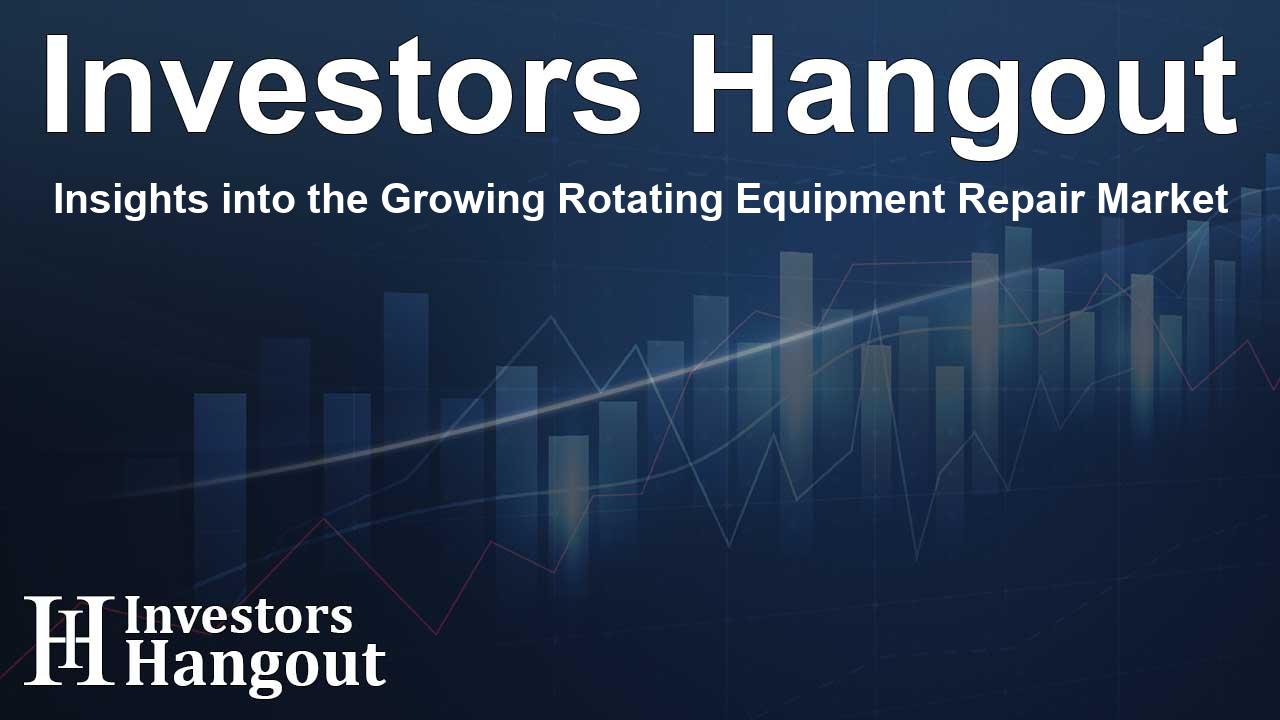Insights into the Growing Rotating Equipment Repair Market

Understanding the Expansion of the Rotating Equipment Repair Market
The global rotating equipment repair market is showing substantial growth, projected to reach a remarkable valuation of US$ 32,047.2 million by 2034. This growth is primarily driven by critical industrial sectors such as manufacturing, energy, and petrochemicals that require efficient rotating equipment operations.
Factors Contributing to Market Growth
One of the key contributors to the market’s expansion is the increasing demand for repairs due to aging machinery and infrastructure. Regular maintenance is essential for ensuring the longevity of these assets, and as industries evolve, this necessity only grows stronger. Additionally, the implementation of preventive maintenance strategies has surged, emphasizing the need for inspections and timely repairs to avoid long downtimes.
The Role of Environmental Regulations
With strict environmental regulations becoming a norm, companies are now mandated to comply with current emission standards that promote reduced energy consumption. This scenario presents further opportunities for rotating equipment repair services, as businesses seek to optimize their operations while adhering to these regulations.
Key Insights from the Market Analysis
From recent analyses, it has been noted that the global market achieved a significant valuation of US$ 15,628.4 million in 2019 alone. North America is expected to capture a notable market share of 31.9% in 2024, indicating its critical role in the overall market landscape. By 2034, this region is projected to amass an impressive US$ 10,639.7 million.
Regional Growth Highlights
Moreover, East Asia is predicted to account for a substantial market share of 22.9% in 2024, with estimates projecting its worth at US$ 8,300.2 million by 2034. This region is expected to expand at a CAGR of 6.3%, underlining its importance in the global arena.
Market Dynamics and Sales Channels
In terms of sales channels, direct OEM-based services are becoming the most significant segment, anticipated to hold a 63.3% value share in 2024. The market for these services is forecasted to reach US$ 20,990.9 million by 2034, with a steady growth rate of 5.4% CAGR.
Equipment Demand Trends
Centrifugal compressors are emerging as the leading equipment in demand, projected to capture 27.8% of the market share in 2024. This segment is expected to witness a steady growth, reaching a valuation of US$ 8,941.2 million by the end of the forecast period.
Opportunities for Industry Players
Market players are actively seeking opportunities in the East Asia region, where the growing power needs create a ripe environment for service expansion. Manufacturers are particularly focused on innovating repair technologies and materials designed to minimize downtime, enhance efficiency, and extend equipment life. These advancements provide a compelling rationale for businesses to engage more deeply with repair service providers.
Leading Players and Innovations
Prominent companies driving market innovation include John Wood Group PLC, Sulzer AG, and General Electric Company. They are enhancing their service offerings to include advanced solutions like predictive maintenance and remote monitoring, catering to a diverse range of rotating equipment.
Recent Developments Impacting the Market
Recent advancements include Sulzer's expansion of high-quality rotating equipment services in India, which aims to provide localized repairs, retrofits, and upgrades. Additionally, API's initiatives focusing on safety within the oil and gas sectors through revised practices for rotating components further underscore the commitment to market improvements.
Future Outlook and Industry Trends
As the industry evolves, key competitors are investing in strategic partnerships and inorganic growth through mergers and acquisitions. This strategy is aimed at achieving greater market penetration and collaboration in technology innovation, thus remaining competitive in this fast-evolving landscape.
Frequently Asked Questions
What is the expected CAGR for the rotating equipment repair market?
The rotating equipment repair market is anticipated to grow at a CAGR of 5% through 2034.
Which region is expected to dominate the market share by 2024?
North America is expected to capture a significant market share of 31.9% in 2024.
What are the primary factors driving market growth?
Key factors include the aging infrastructure, demand for preventive maintenance, and adherence to rigorous environmental regulations.
Which equipment holds the highest demand in the market?
Centrifugal compressors are currently the most purchased equipment segment within the market.
Who are the major players in the rotating equipment repair industry?
Significant companies include John Wood Group PLC, Sulzer AG, and General Electric Company, among others.
About Investors Hangout
Investors Hangout is a leading online stock forum for financial discussion and learning, offering a wide range of free tools and resources. It draws in traders of all levels, who exchange market knowledge, investigate trading tactics, and keep an eye on industry developments in real time. Featuring financial articles, stock message boards, quotes, charts, company profiles, and live news updates. Through cooperative learning and a wealth of informational resources, it helps users from novices creating their first portfolios to experts honing their techniques. Join Investors Hangout today: https://investorshangout.com/
Disclaimer: The content of this article is solely for general informational purposes only; it does not represent legal, financial, or investment advice. Investors Hangout does not offer financial advice; the author is not a licensed financial advisor. Consult a qualified advisor before making any financial or investment decisions based on this article. The author's interpretation of publicly available data shapes the opinions presented here; as a result, they should not be taken as advice to purchase, sell, or hold any securities mentioned or any other investments. The author does not guarantee the accuracy, completeness, or timeliness of any material, providing it "as is." Information and market conditions may change; past performance is not indicative of future outcomes. If any of the material offered here is inaccurate, please contact us for corrections.